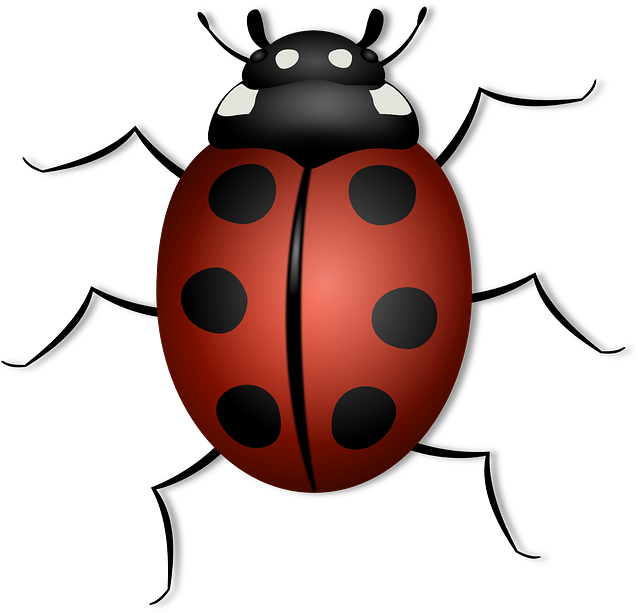Spotted lanternfly infestations, an emerging issue in North America's northeastern regions, demand proactive control measures. Both DIY and professional strategies exist to combat these invasive insects. Homeowners can employ physical barriers, manual removal, and natural repellents like neem oil, garlic sprays, or citrus solutions. Professional services offer specialized treatments, including monitoring traps, biological agents, and pesticide applications, catering to residential and commercial properties. Understanding the lanternfly's life cycle and identifying them by their distinctive wing patterns is crucial for early detection. Organic solutions, such as lavender, citronella, and essential oils, provide eco-friendly alternatives, while professional removal services offer intensive treatments for severe infestations, ensuring long-term control of these disruptive pests.
Spotted Lanternflies (SLF) have become an increasingly persistent and destructive pest in many outdoor spaces. This comprehensive guide explores DIY strategies to combat SLFs, empowering homeowners and property managers to take control of their yard. We delve into identifying these insects and understanding their life cycle, early detection being key to effective management. The article covers a range of natural repellents, mechanical removal techniques, and chemical interventions, offering practical solutions for both residential and commercial spotted lanternfly control and removal services.
# DIY Strategies to Combat Spotted Lanternflies in Your Outdoor Space
When it comes to dealing with spotted lanternflies, many homeowners turn to DIY strategies as a cost-effective and eco-friendly alternative to professional services. One effective method is creating physical barriers to prevent their entry into your yard. This can be achieved by installing fine mesh netting or using plastic sheeting around trees and shrubs, especially during the egg-laying season. Regularly inspecting these areas and promptly removing any eggs or larvae will significantly curb their population growth.
Another DIY approach involves utilizing natural predators and repellents. Birds, bats, and certain insects feed on spotted lanternfly adults and nymphs. Encouraging these beneficial creatures in your garden by installing birdhouses, bat boxes, or growing nectar-rich plants can help keep the lanternfly population under control. Additionally, using neem oil, garlic sprays, or citrus-based repellents can deter these pests from feeding on your plants, making them less attracted to your yard. For more severe infestations, residential and commercial property owners can opt for professional spotted lanternfly control services that offer specialized treatments and removal techniques, ensuring a more comprehensive and lasting solution.
<section id="identifying-the-enemy–understanding-spotted-lanternflies“>
Identifying the Enemy: Understanding Spotted Lanternflies
Spotted lanternflies are an invasive species that has become a growing concern for homeowners and businesses alike in recent years. This pest, scientifically known as Maculipera laternaria, is native to Asia but has spread to North America, particularly in the northeastern United States. They are easily recognized by their distinctive wing patterns—a combination of white spots on a dark background—which resemble a lantern, hence their name. Adult lanternflies typically appear in late summer and early fall, seeking hosts for egg laying.
Identifying an infestation early is crucial for effective control. These insects prefer various tree species, including maple, birch, and willow, making them common in residential areas with these plantings. Professional spotted lanternfly control services employ specialized techniques such as monitoring traps, biological treatments, and targeted applications of pesticides to manage infestations. For homeowners, residential spotted lanternfly treatment may involve manual removal of eggs and adults, tree banding, or using recommended pest control products for spot application. Commercial spotted lanternfly removal services are essential in heavily infested areas to prevent the spread and protect local ecosystems from this damaging invader.
– A comprehensive guide to recognizing the spotted lanternfly and its life cycle, emphasizing the importance of early detection for effective control.
Identifying the spotted lanternfly is a crucial first step in controlling its population. These invasive insects are easily recognizable by their distinct wing patterns—a mix of grey, white, and black spots on otherwise dark wings. Adult lanternflies range from 1 to 1.5 inches in length, with females slightly larger than males. Look for them on trees, particularly maple, where they gather in large numbers during the fall. Eggs are laid on tree bark and look like small clusters of white or cream-colored ovules, often appearing in rows.
Understanding their life cycle is key to effective control. After emerging from eggs, nymphs feed on sap for several months before molting into adults. This process typically occurs over the summer. Adults then lay eggs, starting the cycle anew. Early detection is vital because spotted lanternflies reproduce rapidly, and their ability to disrupt local ecosystems makes them a significant concern. Professional pest control services offer specialized treatment options, including organic and chemical methods, for both residential and commercial areas, ensuring effective spotted lanternfly removal and long-term prevention.
<section id="natural-repellents-and-deterrents–organic-solutions“>
Natural Repellents and Deterrents: Organic Solutions
Natural repellents and deterrents offer an organic approach to combat spotted lanternflies. Planting certain herbs and flowers known for their strong scents can act as a barrier, such as lavender, citronella, and marigolds. These plants release chemicals that repel lanternflies and can be effectively used in residential or commercial areas as part of a comprehensive pest control strategy.
For those seeking DIY solutions, creating a mixture of soap and water or using essential oils like neem oil or peppermint oil is recommended. Spraying these concoctions around affected areas can disrupt the lanternfly’s behavior without resorting to chemical insecticides. While not as potent as professional spotted lanternfly removal services, organic treatments provide an eco-friendly alternative for those interested in long-term prevention and control.
In tackling the spotted lanternfly menace, DIY methods offer a starting point for home gardeners and homeowners. However, for larger-scale infestations or commercial spaces, professional spotted lanternfly control services are indispensable. Organic solutions can provide a more sustainable approach to removal, but severe cases may require the expertise of specialized pest control for spotted lanternflies. Early detection and prompt action, whether through DIY strategies or professional assistance, are key to minimizing the impact of these invasive insects on both residential and commercial landscapes.
